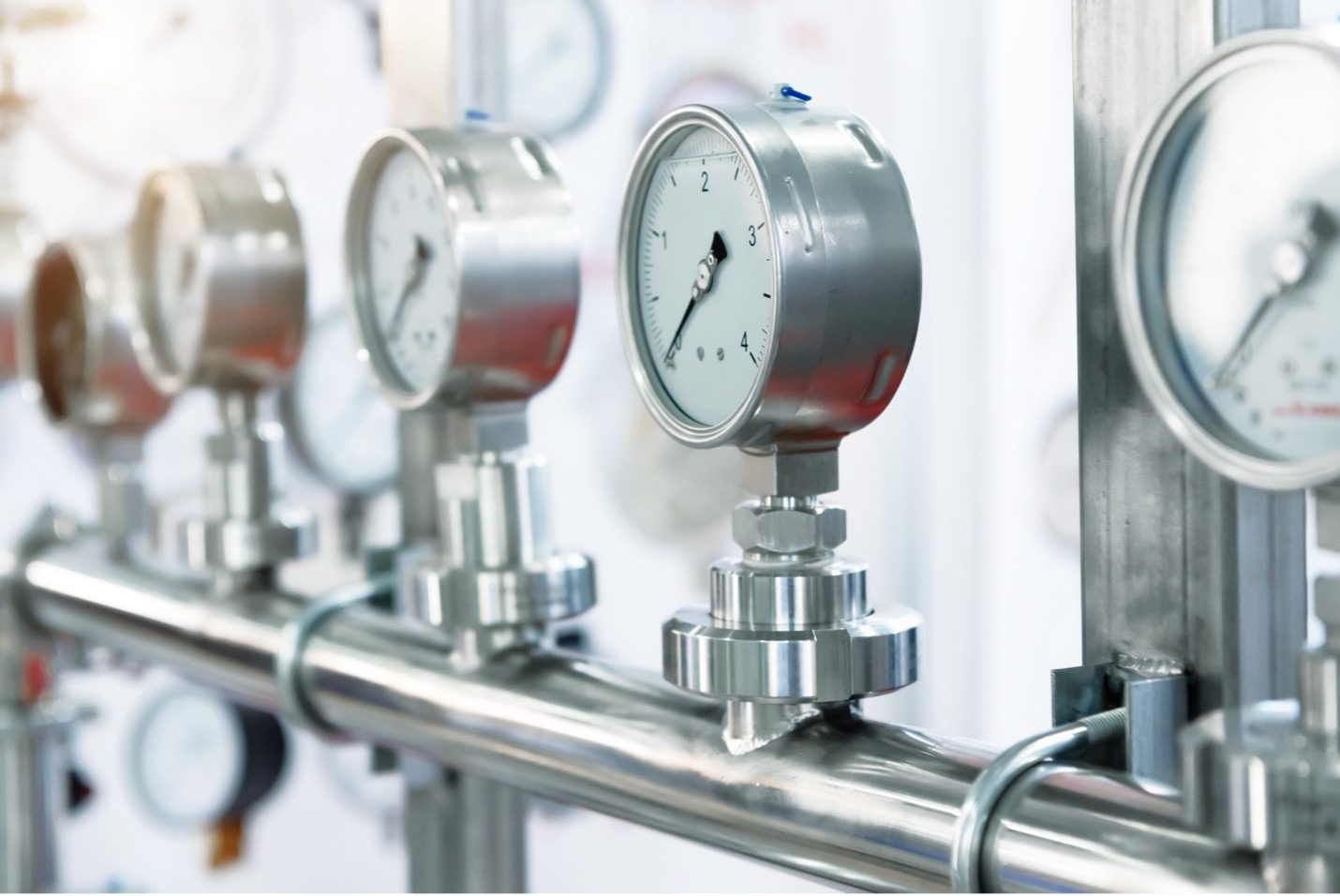
Choosing a pressure gauge for your pressure measurement needs careful assessment of your needs. This includes the accuracy required, the type of application involved, the amount of pressure applied, and the size dial. Since it’s easy to get overwhelmed with choices if you’re not sure what you want, Mid-West Instrument, located in Sterling Heights, MI, recommends learning everything about pressure gauges before placing your order.
As one of the leading manufacturers and designers of differential pressure gauges and switches in the U.S., we understand how vital every instrument is for your job. That’s why we’ve shared this guide to help you select the right pressure gauge.
What is a Pressure Gauge?
A pressure gauge or pressure indicator is an instrument used to measure pressure. Gauge pressure is the pressure relative to atmospheric pressure. For pressures below atmospheric pressure, the gauge pressure is negative. For pressures above atmospheric pressure, the gauge pressure is positive.
Most gauges calculate the pressure relative to atmospheric pressure as zero point. Unlike sensors that require an electric signal and need to be connected to a control system or device to take usable and readable measurements, pressure gauges allow pressure valves to be read directly on a digital display or dial.
Steps to Select a Pressure Gauge
Consider the following factors when choosing a pressure gauge.
Accuracy: The more accurate the gauge, the more graduations are required. Generally, small-sized gauges below 100mm are not recommended for accuracies of ±0.5% or more. This is because the number of graduations needed can make reading the gauge challenging.
Dial size: Minor graduations can be challenging to read if they’re too close together. Therefore, it’s prudent to consider readability when selecting the dial size. They should be large enough to read from different angles and distances. Don’t forget the space where you need to place the gauge, as it should allow free movement.
Scale options: Choosing a gauge with the correct unit of measure is essential. In the U.S., the conversion is in PSI or a pound of force per square inch. You can also get gauges with other popular units of measure such as Kg, kPa, and bar.
Pressure ranges or design pressure: The design pressure is the maximum pressure your gauge will experience during the application. Pressure gauges can handle 130% to 150% of the range. But if the pressure goes beyond that, you will need to get a new gauge with a higher capacity or protect it from inaccuracy.
What are the Different Types of Pressure Gauges?
Some of the common types of pressure gauges include:
- Bourdon tube pressure gauges
- Capsule pressure gauges
- Diaphragm pressure gauges
- Absolute Pressure Gauge
- Differential Pressure Gauge
- Bellows Pressure Gauge
- Manometer Pressure Gauge
- Piezometer Pressure Gauge
Applications of Pressure Gauge
Pressure gauges can be used in different applications, including:
- Measuring vapors, liquids, solids, and gases
- Inspecting air brakes on trucks
- Chemical, pharmaceutical, petrochemical, and processing industries
- Refrigeration, HVAC, ventilation, and food & beverage industries
- Eliminating potential leak paths
Looking for a DP Pressure Gauge Manufacturer in the Midwest?
At Midwest Instrument, we have the tools, technology, workforce, and experience to get your business going. As a leading designer and manufacturer of differential pressure gauges in the Midwest and around the world, you can also trust our quality. To learn more about our product, contact us today!

